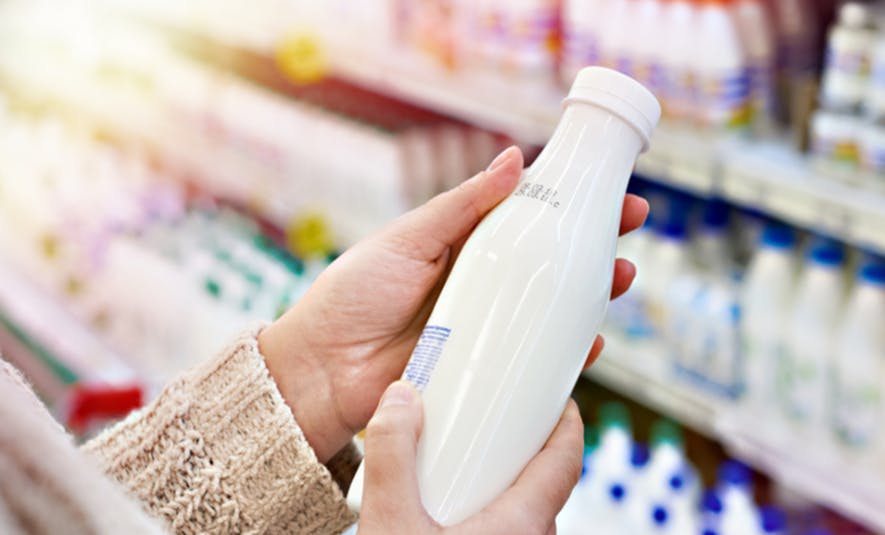Analytics and logistics trends in dairy
The dairy industry has been heavily affected by COVID-19. Besides facing increasing volatility and uncertainty, dairy companies have to develop new strategies to adapt to new market demands, rising customer expectations, and an increased focus on sustainability. All the while, they have to deal with a complex trade-off between service and efficiency, and very short product lifecycles. The supply chain is emerging as a key enabler to achieve these goals. Increasing flexibility and efficiency in logistics is crucial. In this article, we will highlight 4 insights that can help your organization stay on track and meet today’s demands.
1. New trends will bring greater logistics challenges
It has been a challenging period for the dairy industry, given the impact of lockdown measures on food service businesses and restaurants. At the same time, companies have to contend with major trends in farming and agriculture, which pre-date the pandemic. These trends will see changes as well: a higher focus on digital, health and wellness, new delivery models/e-commerce, and deglobalization (or increased localization) in labor. In addition, the sustainability imperative will mean a boost for organic farming. Finally, dairy companies are diversifying their product flows. All of these changes bring new logistics challenges.
The overall result is that dairy companies will have to focus more on logistics and supply chain optimization. Whether it’s milk collection or milk trade, optimizing the network, sourcing and milk valorization, or streamlining outbound distribution, significant benefits can be obtained by using advanced techniques in these areas.
2. There are multiple opportunities to optimize logistics
Benefits can be achieved in various ways. In milk collection, there are regional imbalances between supply and demand. This results in long-distance transportation of raw milk towards plants in other regions. For semi-finished milk products, there are also long-distance transports between plants in different regions. Research has shown that there are substantial benefits to be gained between regions, when considering backhauling opportunities. Taking the imbalance of all transport flows between regions into account can help you allocate raw milk to dairy plants more efficiently.
When optimizing outbound transportation flows (to retail and food service customers), there are compelling opportunities to combine loading and routing optimization, and maximize the utilization of pallets, trailers and containers. There are considerable benefits in combining both, even when transport is outsourced to sub-contractors.
Another area with big potential is optimizing sourcing and valorization. The value of milk depends on its fat and protein content. This differs between end products. For example, for cheese products, high fat and protein is preferred. This implies an optimization challenge: taking both product value and logistics costs into account. Since milk is a natural product, its supply varies throughout the year. The supply chain relies on a push process, which presents additional challenges in optimization. You need to use the latest techniques to get considerable advantages.
3. Become data-driven by adopting Artificial Intelligence (AI)
Operational IT-systems generate a large set of data on a daily basis. Traditionally, this has been stored in BI-databases to measure KPIs and trends. With the power of AI, you can get more value from the data. For example, you can apply machine learning to perform cost-to-serve analyses in an objective way, and measure the cost for each distribution channel and customer. Similarly, the cost-to-collect can be computed over regions, farmers and milk products. More importantly, historical data can be used for forecasting purposes to make more accurate decisions surrounding capacity, resources and milk allocation. By using standardized apps, on top of the ORTEC software solutions, like ORTEC Routing and Dispatch, data can easily be integrated and enriched with external information, like global milk trade, weather forecasts and/or consumption figures. The outcome can also be used to enhance daily operations, resulting in continuous improvement.
4. Change management is key
Given the increasing focus on logistics in dairy, transparency with stakeholders is necessary. For example, if you implement dynamic routing or want to drive more efficient routes, you need to tend to the concerns of your sub-contractors. Similarly, those who receive finished products should be involved if you change loading or routing rules. To get everyone on the same page, you can set up a control tower. In this case, the receiver can be informed about estimated arrival times and potentially be part of the process of setting arrival times via dock scheduling. This improves both service as well as efficiency; the receiver is prepared for the arrival of the goods. Using a warehouse app to support the gatekeeper at the warehouse, or a carrier portal to support interaction between carrier and shipper, can also be helpful.
To implement this successfully and ensure data quality, you need to set the right expectations within the organization and with your suppliers and customers. Best practices include organizing workshops and tracking benefits and KPIs in a transparent way.
Turning challenges into opportunities
It’s a great time to turn challenges into opportunities. Logistics will be a significant focus area for companies in the industry for the time being, and there are techniques you can apply to leverage data to its full potential and achieve efficiency improvements. Moreover, trends like sustainability, e-commerce growth, and deglobalization will provide an even stronger push for the adoption of data-driven logistics and optimization.
About the author
Goos Kant (1967) is a full-time professor of Logistic Optimization at Tilburg University. He is involved in the master program of Business Analytics and Operations Research, as well as in the master program Data Science & Entrepreneurship. He is the project leader of a large R&D project on horizontal collaboration in logistics. Goos is also a managing partner at ORTEC, with global responsibility for all solutions in the logistics industry. His primary area of interest lies in the 3PL-industry in optimizing their planning processes in the end-to-end supply chain. Goos is involved in courses from MBA-schools TIAS and Nyenrode. He holds both an MSc and a PhD in Computer Science.

